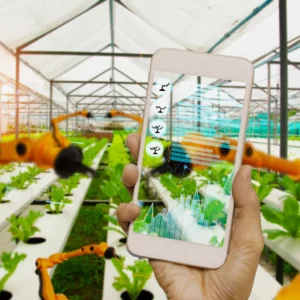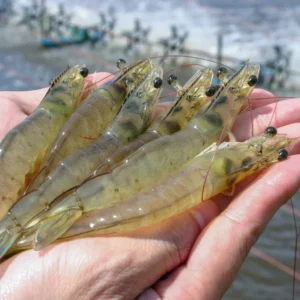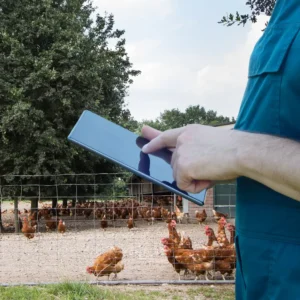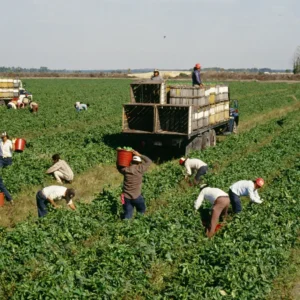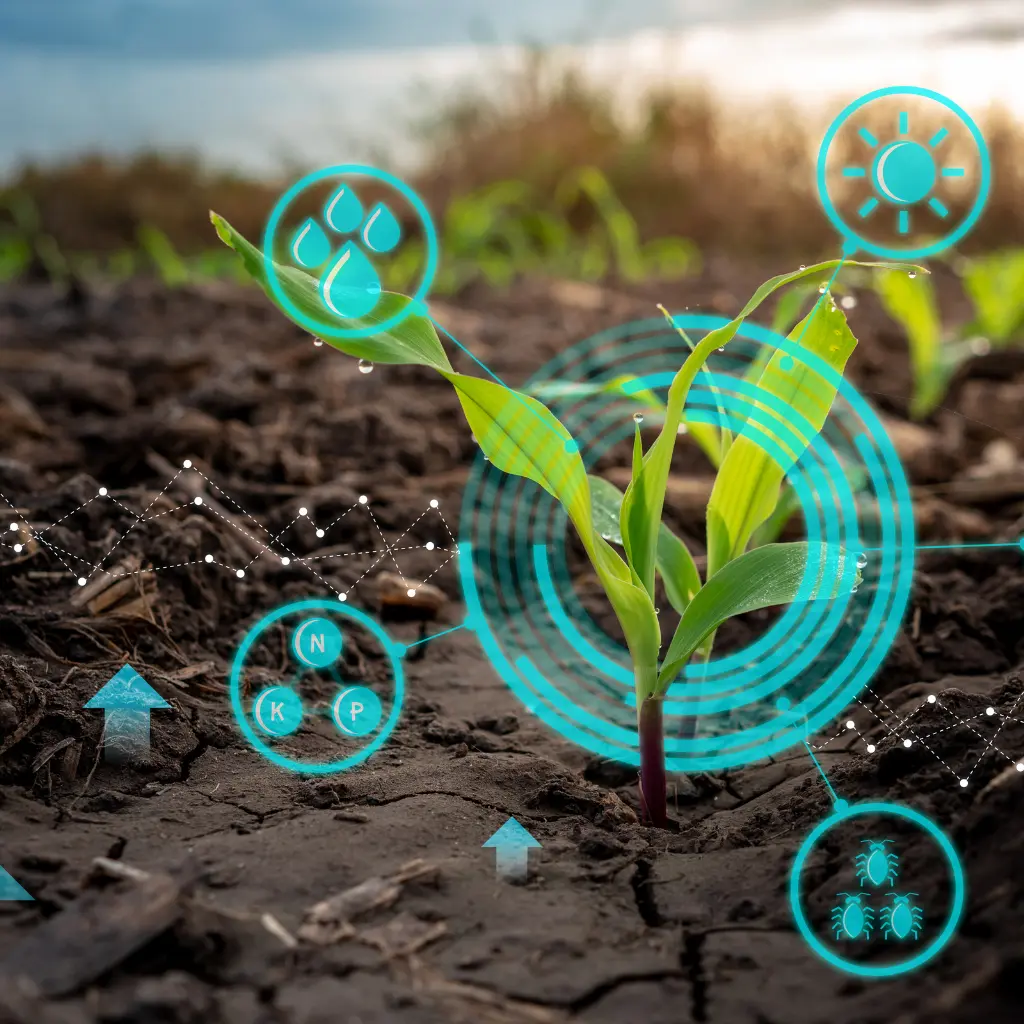
Revolutionizing Sustainable Agriculture
AI in Crop Forecasting and Analysis
Unleashing the potential of AI in agriculture is revolutionizing crop forecasting and analysis. In this era of digital farming, we delve into the astonishing capabilities of AI-driven yield predictions and the role of machine learning in crop analysis.
This article will explore how predictive analytics pave the way for optimal harvest timing, AI’s role in market demand prediction, and the potential of crop disease forecasting.
Table of Contents

Arindam Roy
An Automation Consultant with 25+ years of IT Experience
Yield Yes: Predicting Produce with AI
“Yield Yes: Predicting Produce with AI” highlights integrating artificial intelligence (AI) in agricultural processes to predict crop yields accurately.
Traditional farming practices often need to catch up on anticipating actual outcomes, leading to wasted resources and sub-optimal harvests. On the other hand, AI combines large datasets like weather patterns, soil health, and historical yield data to predict, more precisely, the potential output.
This technology can help farmers plan their crops, minimize waste, and increase profitability. AI in agriculture represents a sustainable solution for food production, contributing to global food security while optimizing the use of natural resources.
From Seed to Success: Deep Learning in Crop Analysis
Deep learning in crop analysis encompasses predicting crop yields, identifying pest invasion or diseases and optimizing crop health. All of these start right from the seed’s germination.
Deep learning technologies use advanced algorithms to analyze historical crop data, satellite imagery and weather conditions, refining predictions and decisions over time through a self-learning system. This technology is a game-changer for farmers.
It empowers them to anticipate potential risks and intervene accordingly, maximizing the crop yield. Thus, integrating deep learning into crop analysis transforms the journey from a seed to a successful crop yield, making agriculture more innovative, precise, and sustainable.
Harvesting at the Right Hour: Predictive Timing with AI
Harvesting at the right time is crucial to avoid crop losses and ensure high-quality yield. With AI, farmers can now leverage predictive timing to plan their harvest. AI systems use weather patterns, crop maturity rates, and soil conditions to predict the best harvesting period.
These systems also consider market trends and peak price periods to optimize profits. Furthermore, AI enables predictive maintenance, alerting farmers when machinery requires repairs or replacement parts.
This prevents unexpected equipment breakdown during critical harvesting periods. Hence, AI technology greatly enhances farming efficiency, minimizing waste and optimizing yield and revenue.
Predicting Pallets and Plates: AI in Market Demand Analysis
The rapid advancement of AI has broken into market demand analysis, changing the game entirely. A crucial aspect of this is predicting product demand – from warehouse pallets to dining table plates.
Incorporating AI and machine learning tools into supply chain processes can decode complex market trends, giving rise to highly accurate predictions and intelligent decisions. These technologies analyze past consumer behaviour, seasonality, and market trends to accurately forecast demand.
As a result, businesses can operate much more efficiently, reducing excess inventory, optimizing resources, and ultimately increasing profits. This is the transformative power of AI in market demand analysis.
Healthy Crops, Hefty Yields: Disease Forecasting with AI
AI has the potential to revolutionize agriculture, with disease forecasting offering exciting applications. This technology can predict and assist in controlling crop health diseases, leading to increased yields.
Using machine learning algorithms and weather prediction models, AI can forecast potential outbreaks, enabling timely interventions. AI can process vast data and detect patterns humans cannot, making disease prediction more accurate.
Furthermore, AI can suggest effective measures to prevent or manage anticipated diseases, reducing crop losses. Through advanced disease forecasting, AI would substantially ensure healthy crops and hefty yields for a prosperous agricultural sector.
Tailoring Techniques: AI in Crop Cultivation
Cutting-edge AI technology is paving the way for pioneering tailoring techniques in crop cultivation. Farmers are using AI-powered tools to collect critical data, including weather predictions, crop maturity, and proliferation of pests or diseases.
Advanced algorithms analyze this data in real time to optimize crop yield by identifying the best time for seeding, fertilizing, and harvesting.
Furthermore, AI algorithms also help precision farming by determining the exact amount of water, nutrients or pesticides required, minimizing wastage and maximizing crop health. These AI-driven tailoring techniques in crop cultivation lead the agriculture sector toward sustainable and efficient farming practices.
From Field Observations to Data-Driven Decisions: AI in Crop Forecasting and Analysis
The transition from field observations to data-driven decisions represents a significant advancement in various sectors. With the advent of technology and analytics tools, it’s now feasible to effectively collect, organize, and analyze complex data sets.
Previously limited by human error and bias, field observations can now be scientifically tabulated and quantified, enabling objective, insightful decisions. Data-driven decision-making allows us to identify patterns and trends that were previously unnoticed.
This strategy facilitates enhanced accuracy, predictability, and efficiency, enabling businesses to strategize better, reduce risks, and increase profitability. Undoubtedly, embracing data-driven decisions is essential for progressive growth in the digital era.
Seasonal Success: Year-Round Analysis with AI
AI technology has great potential in assisting businesses to maintain seasonal success through year-round analysis. It can determine and predict changes in consumer behaviour, sales, or market trends in different seasons.
By applying AI-driven analytics, companies can forecast demand, optimize inventory levels, manage supply chains effectively and strategize their marketing efforts. This not only facilitates better decision-making but also leads to cost savings.
The detailed insights derived from the AI algorithm enhance operational efficiency, boost revenue and lead to a company’s overall growth. Hence, AI-powered seasonal analysis is a significant asset in achieving business success throughout the year.
Sowing Data, Reaping Results: The AI Impact on Farming
AI is revolutionizing the farming sector through data-driven decisions, ensuring more efficiency and productivity. Precision farming practices involve AI technologies like machine learning, robotics, and drone technology.
AI systems continuously collect data about soil conditions, weather patterns, crop health and growth, helping predict crop yields more accurately. Machine learning models also aid in pest and disease outbreak prediction. Automated systems perform tasks like seeding, watering, fertilizing, and harvesting, saving time and reducing human error.
By harnessing the power of AI’s data interpretation, farmers can optimize yields, reduce waste, improve productivity, cut costs, and minimize the environmental footprint of farming.
Dynamic Crop Decisions: Adapting in Real-time with AI
Adapting in real-time with AI allows farmers to make dynamic crop decisions that drastically improve their harvesting efficiency and overall yield. Sophisticated AI systems gather and scrutinize information from diverse sources, including weather projections, soil quality assessments, and crop vitality analyses.
How exhilarating it is to witness the power of technology and data converge to optimize agriculture and enhance our world! This information allows farmers to predict and adjust their crop strategies more accurately. In sudden weather changes or disease outbreaks, AI assists in making hasty decisions to mitigate losses.
It can automate detection processes and provide solutions, aiding farmers to adapt to changing circumstances quickly. Hence, dynamic crop decisions fuelled by AI are revolutionizing modern agriculture, reducing uncertainties, and increasing productivity.
Conclusion
The integration of AI in crop forecasting and analysis heralds a transformative phase in agriculture. As we harness the potential of artificial intelligence, we not only refine our predictive abilities and lay the foundation for sustainable and precise farming practices.
This technological evolution assures healthier crops, timely harvests, and minimal wastage, setting the stage for a future where farming is both scientifically advanced and environmentally conscious.
Related Articles
- AI in Smart Agriculture – Precision Farming
- AI in Modern Aquaculture – Underwater Harvest
- AI in Animal Farming – Tech Meets Livestock
- AI in Sustainable Agriculture – Green Gains
- AI in Agricultural Supply Chain – From Farm to Table
- AI in Agricultural Biotechnology – Bespoke Crops
- AI in Agri-Finance and Insurance – Safeguarding the Harvest
- AI in Farming Tools and Machinery – Equipped for the Future
- The AI Urban Farming Revolution – Cultivating Cities
- AI in Agricultural Automation – Robotic Revolution
- AI in Post-Harvest Care – Beyond the Harvest
- The Surge of Agri-Tech AI Platforms – Digital Farming
- AI in Combatting Crop Diseases – Healthy Harvests
- AI in Boosting Organic Farming – Natural Nurturing
- AI in Agricultural Supply Chain Management
- AI in Precision Agriculture: Farms for a Sustainable Future
- The Role of AI in Agricultural Robotics: Revolutionizing Farming
- AI in Smart Greenhouses: Revolutionizing Sustainable Agriculture
Forbes Articles related to AI usage in the Agriculture Sector:

